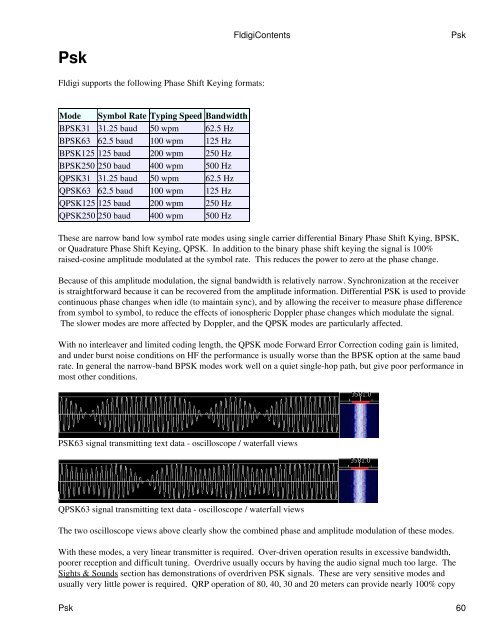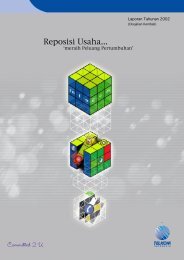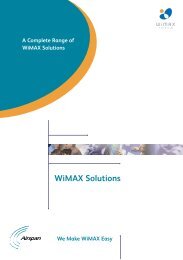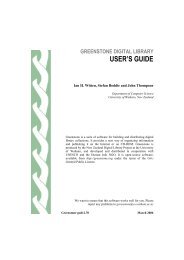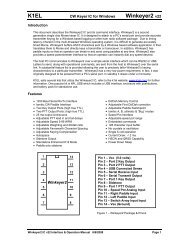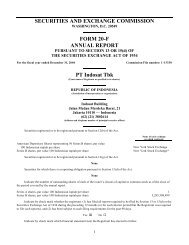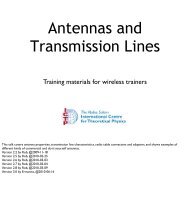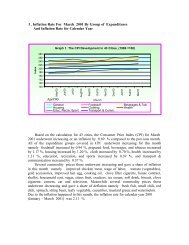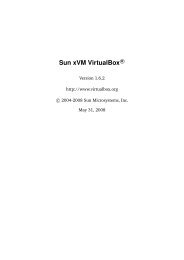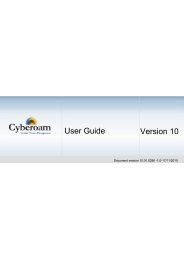Fldigi - Kambing UI
Fldigi - Kambing UI
Fldigi - Kambing UI
Create successful ePaper yourself
Turn your PDF publications into a flip-book with our unique Google optimized e-Paper software.
Psk<br />
<strong>Fldigi</strong> supports the following Phase Shift Keying formats:<br />
Mode Symbol Rate Typing Speed Bandwidth<br />
BPSK31 31.25 baud 50 wpm 62.5 Hz<br />
BPSK63 62.5 baud 100 wpm 125 Hz<br />
BPSK125 125 baud 200 wpm 250 Hz<br />
BPSK250 250 baud 400 wpm 500 Hz<br />
QPSK31 31.25 baud 50 wpm 62.5 Hz<br />
QPSK63 62.5 baud 100 wpm 125 Hz<br />
QPSK125 125 baud 200 wpm 250 Hz<br />
QPSK250 250 baud 400 wpm 500 Hz<br />
These are narrow band low symbol rate modes using single carrier differential Binary Phase Shift Kying, BPSK,<br />
or Quadrature Phase Shift Keying, QPSK. In addition to the binary phase shift keying the signal is 100%<br />
raised-cosine amplitude modulated at the symbol rate. This reduces the power to zero at the phase change.<br />
Because of this amplitude modulation, the signal bandwidth is relatively narrow. Synchronization at the receiver<br />
is straightforward because it can be recovered from the amplitude information. Differential PSK is used to provide<br />
continuous phase changes when idle (to maintain sync), and by allowing the receiver to measure phase difference<br />
from symbol to symbol, to reduce the effects of ionospheric Doppler phase changes which modulate the signal.<br />
The slower modes are more affected by Doppler, and the QPSK modes are particularly affected.<br />
With no interleaver and limited coding length, the QPSK mode Forward Error Correction coding gain is limited,<br />
and under burst noise conditions on HF the performance is usually worse than the BPSK option at the same baud<br />
rate. In general the narrow-band BPSK modes work well on a quiet single-hop path, but give poor performance in<br />
most other conditions.<br />
PSK63 signal transmitting text data - oscilloscope / waterfall views<br />
QPSK63 signal transmitting text data - oscilloscope / waterfall views<br />
<strong>Fldigi</strong>Contents Psk<br />
The two oscilloscope views above clearly show the combined phase and amplitude modulation of these modes.<br />
With these modes, a very linear transmitter is required. Over-driven operation results in excessive bandwidth,<br />
poorer reception and difficult tuning. Overdrive usually occurs by having the audio signal much too large. The<br />
Sights & Sounds section has demonstrations of overdriven PSK signals. These are very sensitive modes and<br />
usually very little power is required. QRP operation of 80, 40, 30 and 20 meters can provide nearly 100% copy<br />
Psk 60


